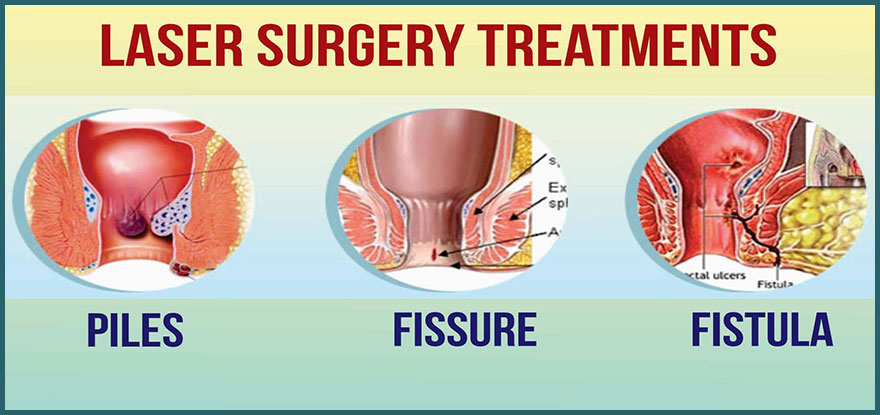Menu
16/1/3, The Landmark building, 3rd floor, Janjeerwala Square, near Sodani Diagnostic Center, Near Janjeerwala Square, Opposite B.B.C, Race Course Road, Indore, Madhya Pradesh 452001

At our clinic, we offer minimally invasive laser treatments for anal fissures and fistulas, ensuring faster healing, less discomfort, and minimal downtime. Laser therapy is a modern, effective, and patient-friendly solution to these common yet distressing conditions.
An anal fissure is a small tear or cut in the lining of the anus, often caused by passing hard stools, constipation, or prolonged diarrhea. It can lead to:
Sharp pain during or after bowel movements
Bleeding
Burning or itching sensation
Discomfort while sitting
An anal fistula is an abnormal tunnel that forms between the anal canal and the skin around the anus. It is usually a result of an untreated anal abscess. Symptoms include:
Persistent pain
Swelling around the anus
Pus or foul-smelling discharge
Recurrent abscesses or infections
Minimally invasive: No large cuts or stitches
Quick recovery: Most patients resume normal activities within a few days
Less pain: Compared to traditional surgery
Reduced risk of incontinence
Day-care procedure: No long hospital stay required
Using a focused laser beam, the damaged tissues are vaporized, reducing pressure and promoting quick healing. This method also helps improve blood flow to the area, speeding up recovery.
Laser treatment (FiLaC – Fistula Laser Closure) involves inserting a laser fiber into the fistula tract. The laser energy seals the fistula from the inside, without cutting the sphincter muscle – preserving continence.
| Feature | Laser Surgery | Traditional Surgery |
|---|---|---|
| Invasiveness | Minimally invasive | Invasive |
| Pain | Low | Moderate to High |
| Hospital Stay | Short / Day-care | 2–3 Days |
| Recovery Time | Fast | Slower |
| Risk of Infection | Low | Higher |
| Recurrence Rate | Low | Moderate |
Initially, patients are started on medical treatment with drugs which lower acid production and decrease reflux. They are also advised to modify their lifestyle and eating behavior to minimize symptoms.
Patients who have severe, chronic reflux symptoms, lifestyle impairment, not responding to medical treatment or complications like ulcers or difficulty in swallowing food may require surgery.
The Operation for GERD is fundoplication. It is almost always performed laparoscopically. It consists of wrapping the upper portion of stomach around the lower esophagus to create a new valve which prevents reflux.
The Operation takes around 90-120 minutes to perform and the length of stay is around 3-4 days.
The Patient is kept nil per oral for 24 hours after the operation. Initially, clear liquids are started and they can take soft diet subsequently which is continued for 2 weeks following the surgery.
16/1/3, The Landmark building, 3rd floor, Janjeerwala Square, near Sodani Diagnostic Center, Near Janjeerwala Square, Opposite B.B.C, Race Course Road, Indore, Madhya Pradesh 452001
© 2025 Dr. ACHAL AGRAWAL | All Rights Reserved | Powered by Mrdigito.com